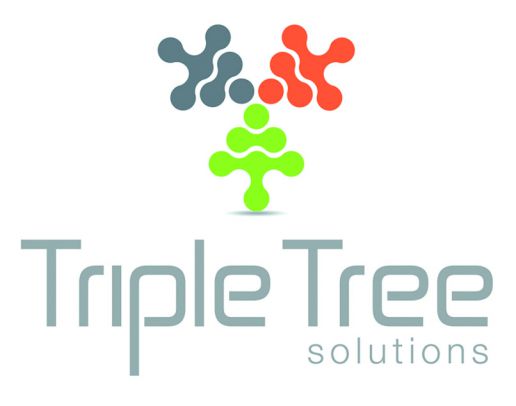
Digitization 4.0 is one of the most important topics of the future when it comes to process control within the textile and fashion industry. At the same time, the digitization of fabrics in the preliminary stage of the clothing industry still poses a major challenge.
One of the key building blocks within these technical undertakings will be the digitization of materials and additionals. Digital material parameters such as elasticity, flexibility, tension and rigidity must be determined for the realistic presentation of textiles in product simulation. For these physical measurements, surfaces, colours and textures must be captured and combined in a technologically feasible way.
What this process of analysis looks like in practice, as well as how fundamentally this new achievement changes and accelerates production processes, is demonstrated by a DIGITAL FABRIC LAB which will be featured for the first time in KEYHOUSE.
‘We are convinced that in the future there will be a digital twin for every fabric or button presented. Through an innovative analysis process, the speed of the production process can be increased many times over. ‘
Sebastian Klinder, Managing Director MUNICH FABRIC START
In a community showcase initiated by MUNICH FABRIC START, leading specialist companies and university professionals have joined forces to demonstrate the individual steps in this new type of process in a comprehensive and practice-oriented manner using simulated digitisation stations.
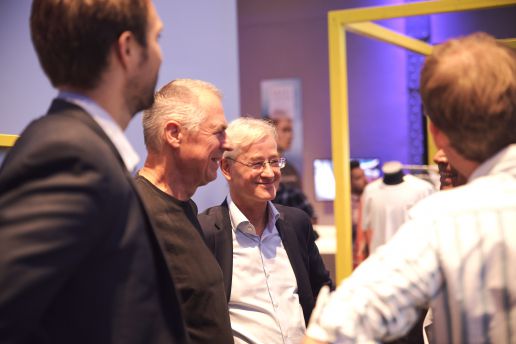
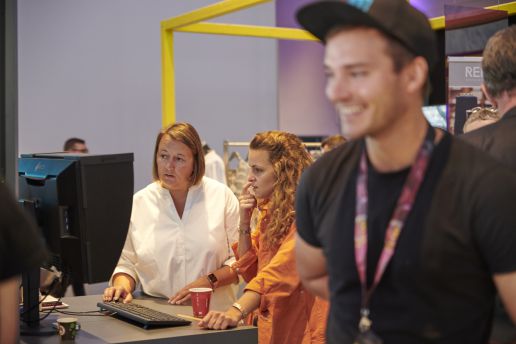
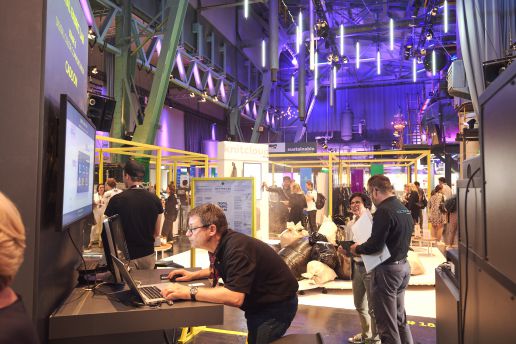
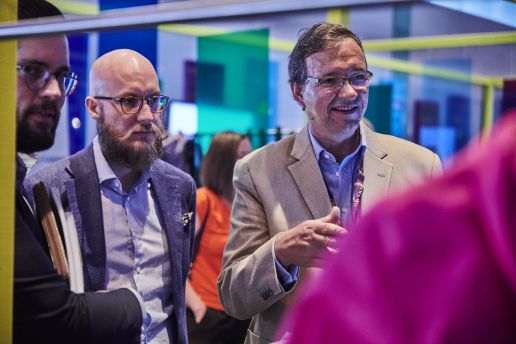
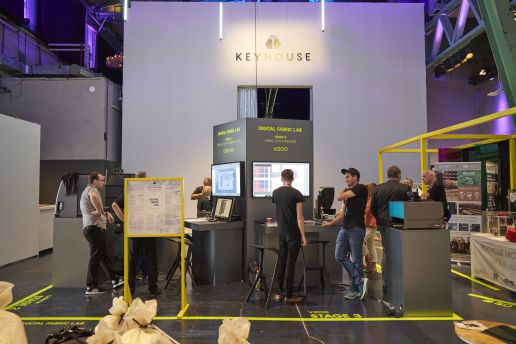
/ STAGE 1 /
# PHYSICAL FABRIC MEASUREMENT
The accurate and informative value of the virtual simulation will on the one hand depend on exact physical parameters for the true representation of the textile material. As well as the transformation into corresponding parameters assigned by the simulation material model and on the other hand it will also depend on exact model calculations.
To describe the material behaviour, the basis weight, the material thickness, the rigidity, the elasticity and the draping behaviour of the textile surfaces can be determined and processed accordingly. This makes it possible for the user to make design and fitting decisions on a purely virtual basis, both for products that will be close to the body as well as those positioned further away.

Technische Universität Dresden
Helmholtzstr. 10
01069 Dresden
Germany
/ STAGE 2 /
# DIGITAL COLOUR COMMUNICATION
Caddon’s multi-spectral technology provides the visually stimulative effects of the design’s colours as well as its spectral data measurements, pixel by pixel in a rapidly captured and communicated image data set, thus making a significant difference to single spectral colour measurement.
With Caddon’s colour digitization, accurate colour values are available where they are needed :
- – in the form of digital colour books with comprehensive colour codes for designers.
- – in the form of digital multi-spectral images for visualisations for production and marketing.
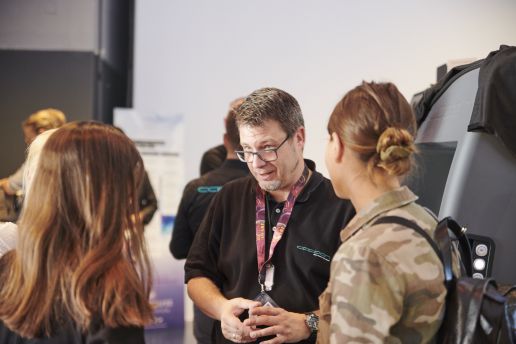

Caddon Printing & Imaging GmbH
Stadionstraße 6
70771 Leinfelden-Echterdingen
Germany
/ STAGE 3 /
# FABRIC SCAN PROCESS
The visual properties of a material sample, sized max. A4, are recorded with the xTex scanner within 1 to 2 minutes. The digitised material is then made into a Tileable, block pattern repeated seamlessly with the help of the xTex software, in a further 5 mintues. Tileable means that it is seamlessly repeated and can be applied to larger areas than initially captured using 3D application.
If necessary, in the following step we can use Caddon’s export colour data to colour or retouch the material using our xTex software for a more accurate colour representation. The finished digital material can then be used in Vidya, for example.
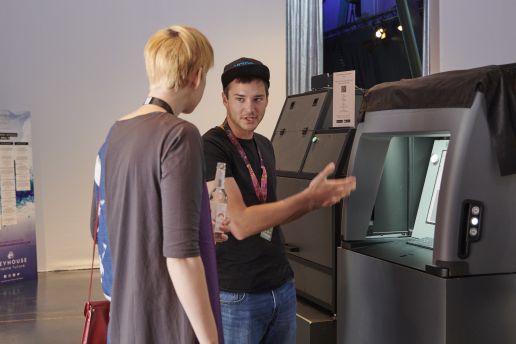

Vizoo GmbH
Johann-Karg-Strasse 30
85540 Haar
Germany
/ STAGE 4 /
# DIGITAL FABRIC SIMULATION & VISUALISATION
3D-Vidya offers the best simulation of cut and material. With 3D-Vidya a piece of clothing becomes digitally visible on the computer, creating realistic decision making bases for designers, product developers and all others involved in the creation process of a collection :
Cutting concepts are visualized.
- – A design becomes immediately visible and can be optimized.
- – Details immediately available including drapery, imprints, ornaments which can be optimally placed.
- – Texture and material properties including elasticity or material thickness, distance to body, gloss structures or wrinkle effects can be precisely represented
- – Fabrics up to 3cm with up to 21 layers can be simulated.
- – Colour management enables the binding of colours to be specified by importing spectral colours and rejecting them under a series of neutral lighting scenarios.
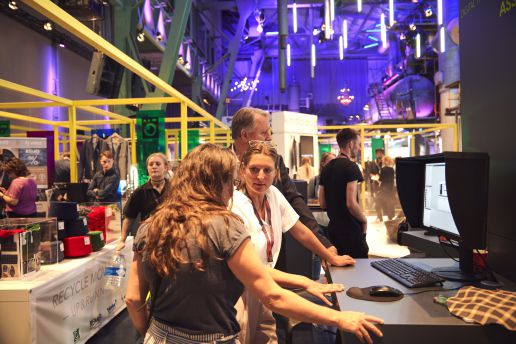

Assyst GmbH
Europaallee 10
67657 Kaiserslautern
Germany
/ STAGE 5 /
# REAL TIME QUALITY ASSURANCE
Based on the speed, transparency and accuracy of Triple Tree Solutions, premium quality management and assurance
solutions is ensured in every stage of textile and apparel manufacturing and sourcing. Using the intuitive and modern user interface, our online quality management system QUONDA visualise all measurements and evaluations throughout the chain. The results are available in real-time and accessible by all members involved, across all devices.
Here at KEYHOUSE we demonstrate the process of colour evaluation, as well as provide a summary and evaluation of the results of the four simulation stations. Digital colour matching between the manufacturer and customer significantly accelerates the procurement process, saves costs and also lowers the carbon footprint of the participating companies by avoiding unnecessary transport – Green Sourcing!

